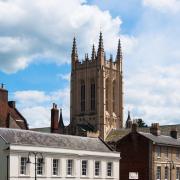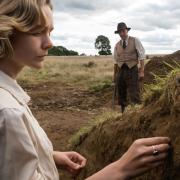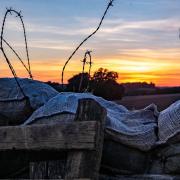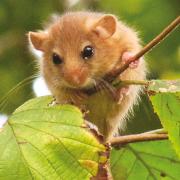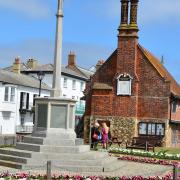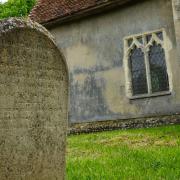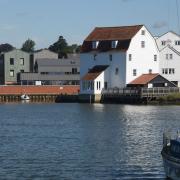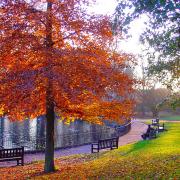Matt Gaw reconnects with a project to restore one of the UK’s rarest habitats at Knettishall Heath | Photos: Paul Ham

The fish hang in the water. Dark brush strokes against the sand and the mud of the river bed. Still, apart from an occasional tail twitch as the current from the weir moves past pink fin and through blood-red gill.
Even the surface of this part of the Little Ouse is scaled, pushed by a purr of wind, delicate as a cat’s paw on water.
After an airless summer that blistered and burnt, which left the earth car-engine hot, the day is cool and refreshing, the sky over Suffolk Wildlife Trust’s Knettishall Heath reserve a fragile, cloudless blue. It is a day of calm. A pause for breath before the seasons change and roar. A time when the trees shed, the birds fill beak and stomach with haw and berry and the first frost splits the swelling sloes.

The river is quiet, but I can still hear the noise from summer, splashes, crashes, flops and swan dives, shrieks born of bone-cold, belly-tightening, skin-pimpling water. The fish move with the slow clock of the sun. A cloud drifting. A lazy scull through shallows that sparkle with light.
Sam Norris, Knettishall Heath’s ranger arrives, and we head off towards the heath, talking as we walk. I tell her about the first time I came here, shortly after I arrived in Suffolk how it seemed so different then. Darker, more fragmented, the heath and woodland separated by long tangles of fence.
It was a stop-start kind of place, as if the flow had been taken from it, the divide between open land and forest sharp, definite. Even the river contained more straight lines than wildlife. Sam smiles. She has worked here since the trust took it on in 2012, leading a six-year project to restore one of the UK’s rarest habitats. For her the whole thing has, and still is, about reconnecting.

The fences have now gone, and the hard divides softened by habitats that blend into one another. The river has been transformed, its meander and crucially its flow – the fluvial pulse so vital for aquatic life – has been kickstarted.
Blocks of trees have also been cleared, opening up and reconnecting areas of heath that could otherwise have become homogenous woodland not capable of supporting the rare wildlife associated with the Brecks.
It is this last element, the removal of trees, that has been the biggest challenge, both in terms of size of the job and the feelings that felling provokes.

“For some people it seems strange for a wildlife organisation to be felling trees, I completely get that. But the message we’re trying to get across is that the lowland heath we are trying to save, with all of the life it supports, is incredibly rare.” She pauses to point out some of the veteran pine that have been retained.
“Even with all the trees that have been removed – and we’re not planning on removing any big blocks in the future – there are still more here now than any time for the last 5,000 years.”
We keep going, heading for an area that was cleared during winter last year. There are signs that the Exmoor ponies that roam across this reserve have been here, their movements and grazing helping to keep it open. In amongst the bone-like shards of dead pine, grow young purple heather and heath sedge.

It is here that wood lark, a bird whose uplifting lu-lu-lu connects land to wide sky, has been heard for the first time for decades. A song of heath and a song of health.
Our walk is short. Sam, used to wrangling ponies, marching miles through scrub and wood, has to take it easy. By the time this is published she will have become a mother for the first time.
More new life for Knettishall Heath, another set of footprints across the land. We rest on the top of Hut Hill, a Bronze Age burial mound, that is the reserve’s highest point.

During a recent archaeological survey more mounds were found nearby, almost ploughed away, but still just visible. A bump. A shadow in the dirt. A memory.
Sam points down towards the river where a gap has been made in the trees. She explains that when the remains of the dead were interred here there would have been a clear view of the Little Ouse. It was probably the reason this location was chosen.
The river was a life-giver, a source of food and transport, its movements formed and fertilised the land. Also, the water was a link to a different world. The river, rising from under the ground and flowing eternally, helped connect the living to the dead. The Little Ouse, sacred and Stygian.
The view still feels important. The restoration of the land, the unpeeling and understanding of its layers and history, has obvious benefits to wildlife, but it is also culturally significant.
As Sam said, it is all about reconnecting.
Everyone at Suffolk Wildlife Trust would like to congratulate Sam and Shaun on the birth of Logan Harry Norris.
Who, what, where
Matt Gaw is editor of Suffolk Wildlife Trust magazine.
Much of Knettishall Heath is designated as a Site of Special Scientific Interest (SSSI). As Breckland it is one of the UK’s biodiversity hotspots.
Knettishall Heath, Thetford, IP22 2TQ




